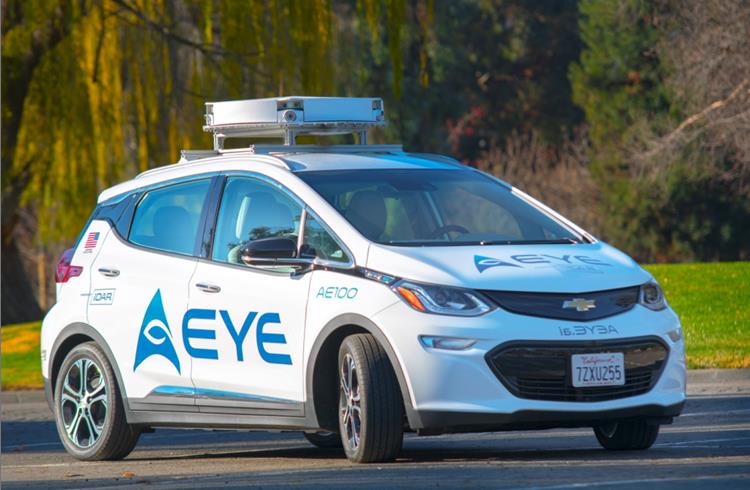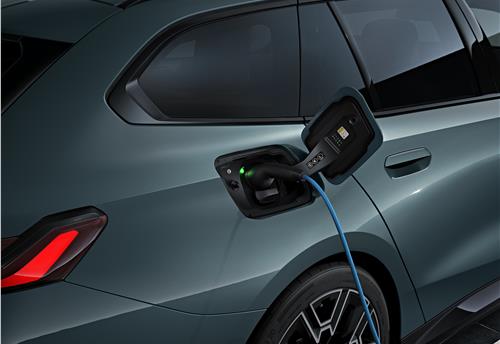AEye reveals AE100 robotic perception system for autonomous vehicles
AEye states that its iDAR technology brings new capabilities that redefine robotic perception performance, such as target acquisition time and blob revisit rates, where iDAR delivers a 3000x improvement.
Intel-backed AEye a robotic perception company showcases the AE100, its robotic perception system for autonomous vehicle, ADAS, and mobility markets at the CES 2018.
The company says its AE100 is a solid state, cost-optimised system based on its iDAR (Intelligent Detection and Ranging) technology, which helps in a new form of intelligent data collection that enables rapid, dynamic perception and enhanced path planning. AEye claims that its iDAR integrates three core components: the world’s first agile MOEMS LiDAR, pre-fused and bore-sighted with a low-light HD video camera; distributed artificial intelligence; and software-definable and extensible hardware. The combination will enable iDAR to dynamically adapt to the real-time demands of automated and autonomous vehicles.
AEye states that it will start sales of AE100 early this year to OEMs and Tier 1s for their autonomous vehicle initiatives. “The AE100 is a game-changer for the autonomous vehicle and ADAS markets, as it makes iDAR technology commercially available for the first time,” said Luis Dussan, founder and CEO of AEye. “iDAR-based robotic perception allows sensors to mimic the visual cortex – bringing real-time intelligence to data collection. As a result, the system not only captures everything in a scene - it actually brings higher resolution to key objects and exceeds industry required speeds and distances. By solving for the limitations of first generation LiDAR-only solutions, AEye is enabling the safe, timely rollout of failsafe commercial autonomous vehicles.”
The AE100 utilises a more powerful, yet safer, 1550-nm laser, which the company says can always interrogate 100 percent of the scene, while typical fixed pattern LiDAR systems are only capable of interrogating 6 percent of any scene, due to huge vertical gaps inherent in raster or spinning systems. As per AEye its embedded intelligence in the AE100 offers several key advantages.
Coverage – it uses dynamic patterns for mapping the environment, as it is not tied to one fixed mode. In evaluating any given scene the company says its software definable scanning delivers more than 10x the 3D resolution over legacy systems.
Speed – it is claimed to be 3x faster without missing any objects between scans while identifying and solving any temporal anomalies. This reduces scan gaps, resulting in more than 25 feet of faster response distance at average highway speeds – more than two car lengths.
Range – it extends effective range at comparable resolution by 7-10x over currently deployed LiDAR systems.
iDAR
The company’s technology mimics a human’s visual cortex focus and evaluates potential driving hazards, using a distributed architecture it critically and dynamically assesses general surroundings, while applying differentiated focus to track targets and objects of interest. The product is scalable, that utilises a software-definable approach which enables iDAR to deliver higher accuracy, longer range, and more intelligent information to optimise path planning software - enabling drastically improved autonomous vehicle safety and performance at a reduced cost.
“The scorecard of performance characteristics used to judge current LiDAR-only systems must be rewritten from basic serial data collection to intelligent and value-added information creation,” said John Stockton, vice president of product at AEye. “Up until now, basic capabilities such as resolution, speed, and range have been the only metrics tracked. iDAR brings new capabilities that redefine robotic perception performance, such as target acquisition time and blob revisit rates, where iDAR delivers a 3000x improvement. The result is a system that has the capability to very quickly or instantaneously calculate things such as 3D multivariable velocity and acceleration, true colour point clouds, and augmented single centimetre level localisation for radically improved control, innovation and performance of path-planning software.”
RELATED ARTICLES
Nissan shows in-construction all-solid-state battery pilot line in Japan
Under the Nissan Ambition 2030 long-term vision, Nissan aims to launch EVs equipped with the batteries by fiscal year 20...
BMW Group sells 82,700 BEVs in Q1 2024, sees growth across all key markets
The company has delivered a total of 82,700 fully-electric BMW, Mini and Rolls-Royce vehicles to customers worldwide, up...
Lanxess and IBU-tec to develop iron oxides for LFP EV batteries
Collaboration aims to improve performance of LFP cathode material; reduced carbon footprint of batteries through use of ...





 By Autocar Pro News Desk
By Autocar Pro News Desk
 08 Jan 2018
08 Jan 2018
 5911 Views
5911 Views












